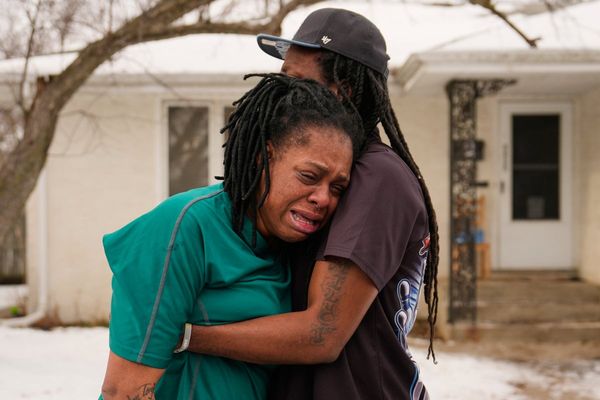
Your support helps us to tell the story
Hurricane John ripped toward Mexico's southern coast on Monday after rapidly intensifying over the eastern Pacific Ocean, surprising authorities who called for residents of some coastal areas to head for cover.
The U.S. National Hurricane Center said John had “rapidly strengthened” into a hurricane with maximum sustained winds of 105 mph (165 kph). The storm was close to the coast — about 30 miles (45 kilometers) south of Punta Maldonado and it was moving north at 8 mph (15 kph).
John was barreling forward as a Category 2 hurricane Monday afternoon, but was forecast to continue strengthening into a major hurricane late Monday or early Tuesday. John’s forecast path continued shifting so the point of landfall remained uncertain.
The center said dangerous winds and storm surges, as well as “life-threatening” flash floods in the Pacific coast near Oaxaca, a hub of resort towns, were “imminent”.
The unexpected surge in strength caught scientists, authorities and residents of the area by surprise, something meteorologist Matt Benz attributed to warmer oceans, which add fuel to the hurricanes.
As a result, surprise surges in hurricanes' strength have become increasingly common, Benz said.
“These are storms that we haven’t really experienced before,” he said. “Rapid intensification has occurred more frequently in modern times as opposed to back in the historical record. So that’s telling us there’s something going on there.”
Things were tense in Oaxaca’s coastal cities on Monday shortly after the announcement as residents and businesses were bracing themselves. Authorities appeared to be responding quickly to the shift in forecast.
Laura Velázquez, the federal coordinator of civil protection, told residents of Pacific coastal cities they should evacuate their homes and head to shelters in order to “protect theirs and their family's lives.”
“It's very important that all citizens in the coastal zone ... take preventive measures," Velázquez said.
Ana Aldai, a 33-year-old employee of a restaurant located on the shores of the tourist hub Puerto Escondida, said that businesses in the area began closing after authorities ordered the suspension of all work on the area's main beaches.
After authorities met Monday afternoon to plan their response, the governments of Guerrero and Oaxaca states announced they would suspend classes in a number of coastal zones on Tuesday.
Oaxaca's governor said the state government had evacuated 3,000 people and set up 80 shelters. It also said its sent out 1,000 military and state personnel to address the emergency.
Videos on social media from Puerto Escondido showed flip-flop-clad tourists walking through heavy rain and fishermen pulling their boats out of the water. Strong rains in previous days have already left some roads in the region in a precarious position.
Aldai said she was “a little bit distressed" because notice from authorities came quickly. “There was no opportunity to make the necessary purchases. That also distresses us," she said.
Benz, the meteorologist, expressed concern that the storm could slow once it hits land, leaving the storm hovering over the coastal zone, which could cause even greater damage.
The hurricane is bleak news for the region, which last year was walloped by Otis, a similar rapidly intensifying hurricane.
Otis devastated the resort city of Acapulco, where residents had little warning of the strength of what was about to hit them. One of the most rapidly intensifying hurricanes ever seen, scientists at the time said it was a product of changing climate conditions.
Otis blew out power in the city for days, left bodies scattered on the coast and desperate family members searching for lost loved ones. Much of the city was left in a state of lawlessness and thousands scavenged in stores, scrambled for food and water.
The government of President Andrés Manuel López Obrador received harsh criticism for its slow response to Otis, but since authorities have pledged to pick up their speed.
President-elect Claudia Sheinbaum said her government planned to work on improving an early alert system, similar to what the country has with earthquakes.
Through Thursday, John is expected to produce 15 to 30 centimeters (6 to 12 inches) of rain across coastal areas of Chiapas state with more in isolated areas. In areas along and near the Oaxaca coast to southeast Guerrero, between 25 and 50 centimeters (10 and 20 inches) of rain with isolated higher totals can be expected through Thursday.
“You’re going to feel the impacts of the storm probably for the next couple of weeks to a couple of months,” meteorologist Benz added.
____
Follow AP’s coverage of Latin America and the Caribbean at https://apnews.com/hub/latin-america







